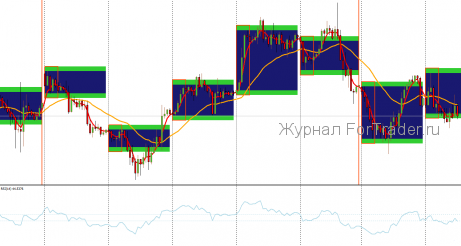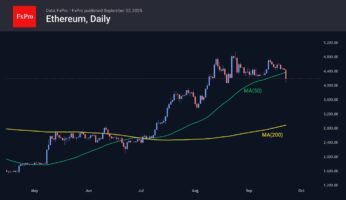Deflation is a sustained decrease in the overall price level of goods and services in an economy. Unlike temporary discounts, promotions, or seasonal sales, deflation lasts for months or even years and affects the entire market—from groceries to real estate.
Economists measure deflation using the consumer price index (CPI), which reflects changes in the cost of a fixed basket of goods and services. When the index declines over several consecutive periods, it signals the onset of deflation.
Deflation is the opposite of inflation. While inflation reduces the purchasing power of money, deflation increases it, making money “more valuable” and goods cheaper. However, this can make the economy vulnerable: when everyone starts saving, money stops circulating.
Contents
- Why Prices Deflate
- How Deflation Differs from Inflation
- Causes of Deflation
- Consequences of Deflation
- How Governments Combat Deflation
- Deflation and Personal Finances
Why Prices Deflate
- The main cause of deflation is a drop in aggregate demand. When people spend less, companies cannot sell goods at previous prices and must lower them to attract buyers.
- Sometimes deflation results from overproduction—when supply exceeds demand, especially after economic booms followed by downturns.
- Another cause is a reduction in the money supply. If there is less money in the economy (due to tighter monetary policy, rising interest rates, or capital outflows), economic activity slows down.
- Additionally, deflation is fueled by a high propensity to save. People save rather than spend, further reducing demand. This creates a vicious cycle: prices fall → people expect even lower prices → businesses lose profits → the economy slows.
How Deflation Differs from Inflation
These are opposite processes, but both can be harmful if they exceed moderate levels.
- Inflation means rising prices and decreasing money value,
- Deflation means falling prices and increasing money value.
Moderate inflation (around 2–4% annually) supports economic growth: companies earn more, wages rise, and people spend freely. Deflation causes the opposite: wages fall, loans become harder to repay, and businesses lose incentives to grow.
For example, with 10% inflation, a loan of 1 million rubles effectively loses value, making it easier to repay. With 5% deflation, the same loan becomes more expensive in real terms. Thus, deflation can be more dangerous for debtors and businesses than inflation.
Causes of Deflation
- Tight austerity measures. Artificially cutting spending pressures the consumer sector and slows the economy.
- Increased labor productivity. Higher production volumes create excess goods, lowering prices, reducing labor demand, and promoting deflation.
- Changes in capital markets. Lower central bank interest rates allow cheap loans, boosting production. When supply outpaces demand, companies reduce prices to stay competitive, causing deflation.
- Anti-inflation policies reducing money supply. This raises money’s value, stops money printing, restricts lending, and forces companies to lower prices to stimulate sales.
Consequences of Deflation
Deflation is dangerous not by itself but because it signals falling domestic demand. While mild inflation (2–3%) is seen as healthy, deflation at similar levels prompts urgent government action to prevent economic decline.
Deflation can lead to:
- Lower business revenues
- Wage cuts and layoffs
- Changes in consumer spending
- Reduced investments
- Declined lending
At first glance, falling prices seem beneficial, but they trigger a chain reaction:
- For consumers — income loss as employers cut wages due to shrinking profits. People save more and spend less, deepening demand decline.
- For businesses — reduced revenue and profit margins force cost-cutting, investment freezes, and layoffs, increasing unemployment and worsening the situation.
- For the economy — a deflationary spiral: people stop buying → businesses earn less → production cuts → incomes fall → demand drops further. This cycle can last years, as seen in Japan or the US during the 1930s.
How Governments Combat Deflation
Central banks and governments use several tools to revive growth:
- Lowering interest rates to make loans cheaper, encouraging consumption and investment.
- Quantitative easing: central banks buy bonds to inject money into the economy and increase the money supply.
- Fiscal stimulus: governments increase spending by building infrastructure, subsidizing businesses, and raising public sector wages.
- Direct payments to citizens, such as “helicopter money” during the US pandemic, to boost demand and circulate money.
- The goal is to restart the “engine of the economy” so people spend again and companies produce more.
Deflation and Personal Finances
For individuals, falling prices may seem advantageous, but deflation raises the real cost of debt, lowers incomes, and worsens employment.
Although goods become cheaper, money becomes scarcer. To protect themselves, people should:
- Avoid holding all savings in cash, as “expensive money” hinders capital growth;
- Invest some funds in fixed-income instruments like bonds, deposits, or dividend stocks;
- Diversify assets to avoid dependence on a single income source;
- Not postpone necessary large purchases indefinitely, since waiting too long can cause loss of value in other resources, such as time.









